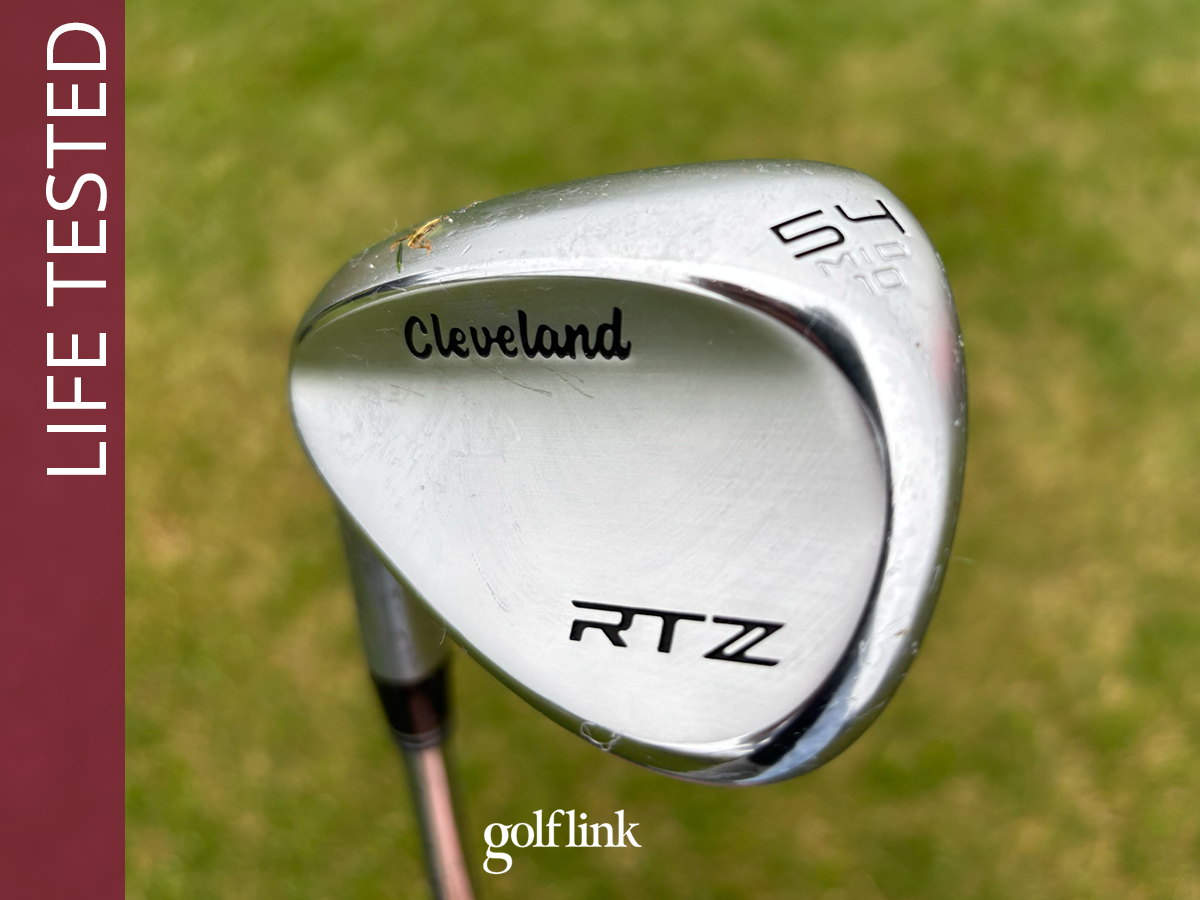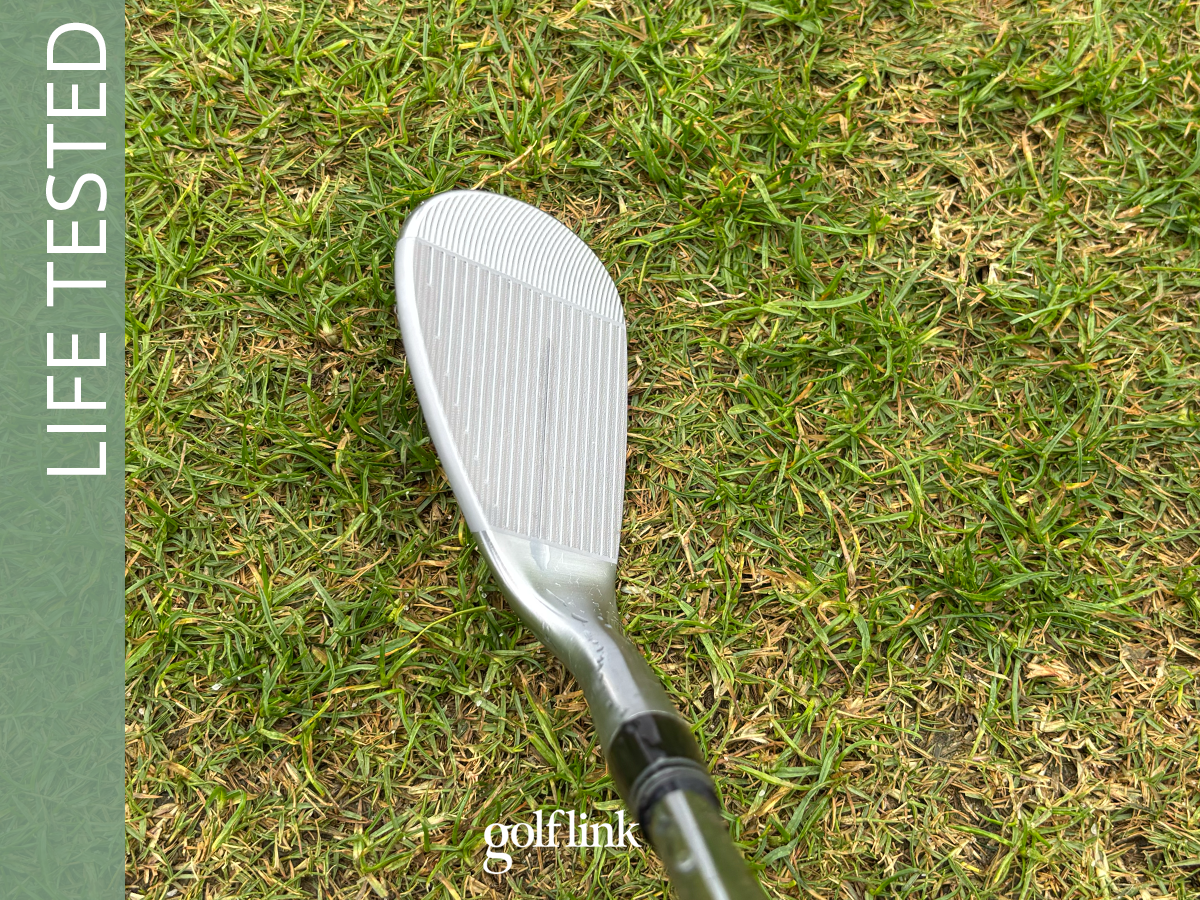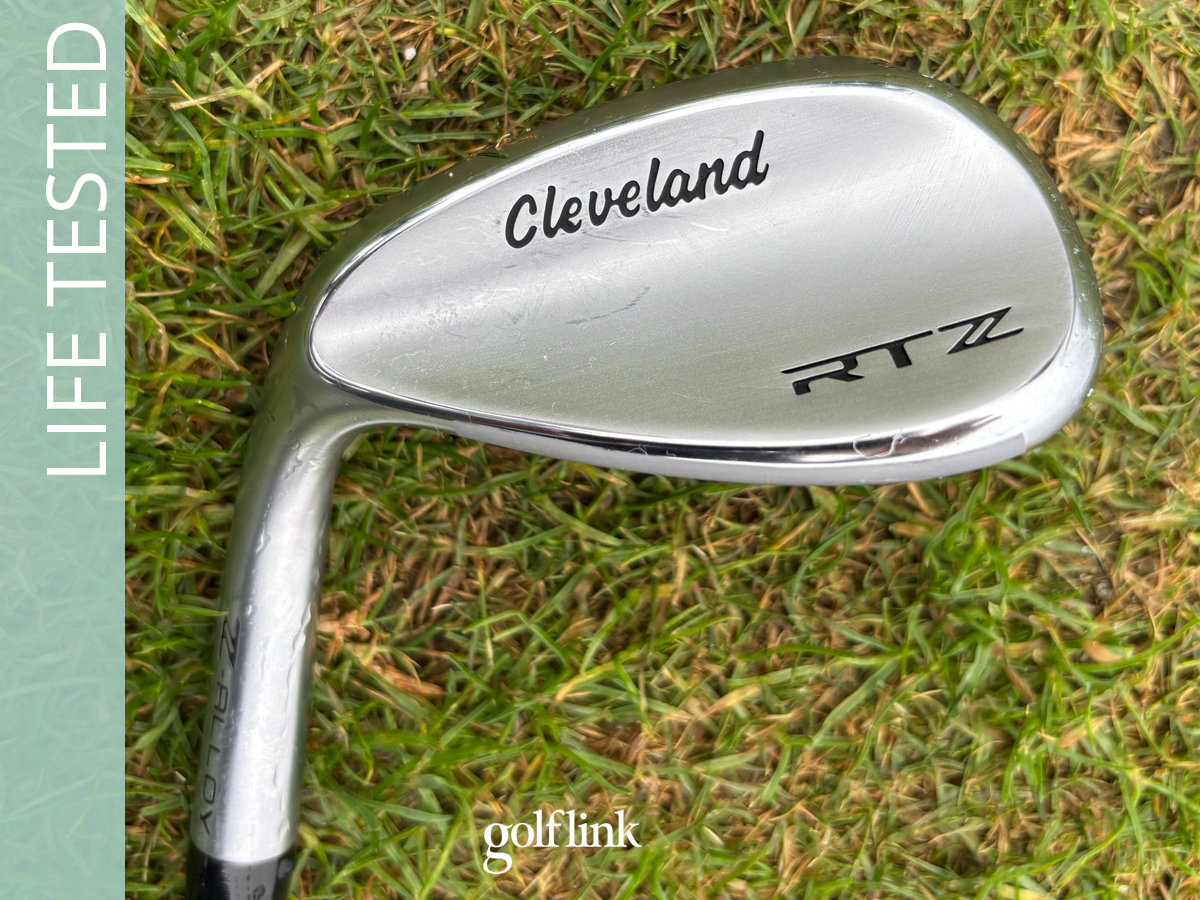Cleveland RTZ Wedges: Life-Tested Review
Tested: Cleveland RTZ Wedges Deliver Spin, Control, and Versatility

Cleveland didn’t just introduce new wedges for 2025, they introduced a whole new material in their wedges.
The new Cleveland RTZ wedges are made from Cleveland’s Z-Alloy, which the company spent years developing. The Z-Alloy is less dense, giving Cleveland engineers more wiggle room to optimize weight placement. It also produces a softer feel, a perk Cleveland is touting with its slogan New Steel, Better Feel.
I put the RTZ wedges through an extended short-game test during the 2025 PGA Show demo day, so let’s take a closer look at what’s inside these new short game tools, and how they perform.
Inside the Cleveland RTZ Wedges

Cleveland RTZ wedge at address during GolfLink testing
SHOP CLEVELANDPGA TOUR SUPERSTORE
Loft: 46-64 (even lofts)
Finish: 3 (Satin, Black, Raw)
Bounce: 4 (Low, Mid, Full, Adapt)
Cleveland’s own Z-Alloy is the biggest, but not the only, story of the RTZ wedges. The lower-density alloy gave Cleveland engineers freedom to move more weight where they want it, and less where they don’t. In the end, Cleveland was able to move six grams of mass to where it felt it would be best positioned.
Not to put you to sleep, but we have a few more Zzzs to discuss. Beyond the Z-Alloy, the RTZ wedges feature ZipCore technology, a HyrdaZip face, and UltiZip grooves.
ZipCore is not new to Cleveland wedges, but the fact that it’s carried over into RTZ demonstrates Cleveland’s faith in the tech. ZipCore is a low-density core that replaces the heavier metal of the rest of the club to optimize CG and increase MOI.
HydraZip is a feature you can actually see. The unique pattern of milling and face blasts between the grooves is designed to boost wedge performance from wet turf.
Finally, UltiZip sharp grooves work in tandem with deeper grooves to cut through and wisk away grass, dirt or other debris through impact, resulting in more consistency from shot to shot.
Cleveland RTZ Wedge Performance

In a word, the Cleveland RTZ wedges are versatile.
Sure, I enjoyed the mildly softer feel at impact, but with the naked eye, I couldn’t tell you how much the ZipCore helped MOI or UltiZip cleared debris through impact.
However, I was giddy about the amount of spin and control I had while hitting all kinds of pitch and chip shots in rainy, wet, soggy conditions. So thank you, HydraZip.
In all seriousness, I found it exceptionally easy to control short game shots with these wedges. I could open up the face and take it upstairs, and just as easily hit a low spinning, two-hop-and-stopper, stopping both varieties inside the circle of friendship with consistency. I hit shots from various lies as well, from tightly-mown areas to rough and trampled fescue.
Throughout testing, it was easy to see the right shot, and execute it.
Cleveland RTZ Wedge Options
The RTZ wedegs are available in serveral varieties.
For starters, you can choose between from three distinct finishes, satin, black or raw. One new note is that unlike previous materials, the raw finish with Cleveland’s new Z-Alloy won’t rust. From there, you can select traditional or full-face grooves.
Then, of course, you have various grind options. Cleveland makes the grind options as straightforward as any wedge-maker, offering full, mid, low or adapt grinds. Here’s a quick look at how the various sole grinds compare:
- Full: 12° bounce, full sole, roundest leading edge, available on 56-60° wedges
- Mid: 10° bounce, versatile V-shaped sole, less round leading edge, available on 46-50° wedges
- Low: 6° bounce, C-shaped sole with relief on toe, heel and trailing edge, sharpest leading edge, available on 58-62° wedges
- Adapt: 8° bounce, C-shaped sole with rounder leading edge than low sole, available on 54-60, 64° full face wedges
Take Them for a Spin
Testing these Cleveland RTZ wedges felt like playing with a new toy. It was fun and even after 30 minutes or more, I didn’t want to stop.
Cleveland has built a strong reputation for its wedges, and the RTZ line introduces a new chapter in that legacy. In other words, Cleveland has always made good wedges, and while these are an improvement over previous generations, I wound’t expect them to be head-and-shoulders better than their predecessors, because those were really good, too.
It’s a good idea to replace your wedges ever two – maybe three – years, or about every 100 rounds or so. If it’s a new-wedge year for you, make sure to check out these RTZ wedges.